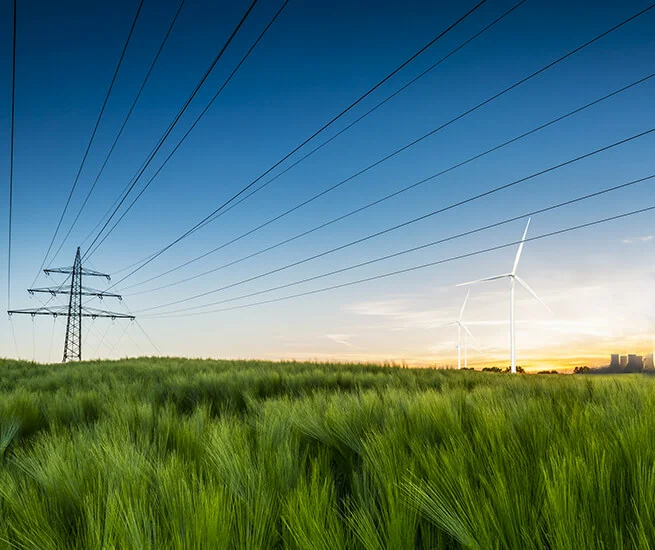

The Energy Blog of RWE
Most popular articles

How hydrogen could change the steel production
Read more
Europe’s battery industry is booming
Read more
North Africa’s hydrogen potential
Read more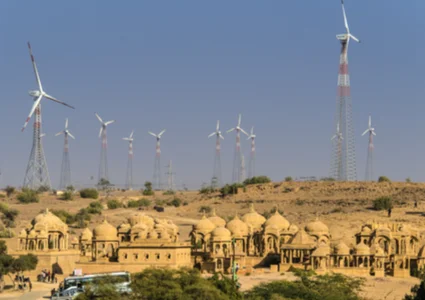
India’s onshore wind sector set for acceleration
Read more
Already en:formed today?
Read more
Battery boom: meet Germany’s ‘gigafactories’
Read more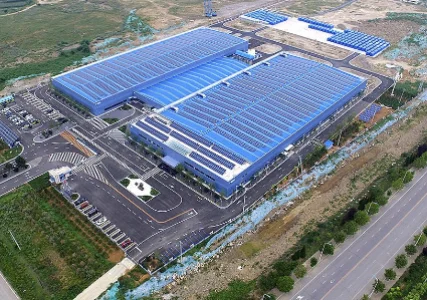
China builds the world’s largest lithium-free battery
Read more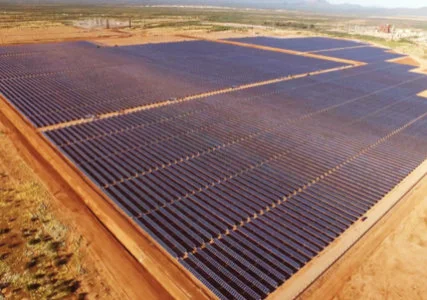
Morocco-UK subsea power link would be world’s longest
Read moreTopics
Number of the month
commercial kettles would together generate as much thermal energy as Berlin’s new power-to-heat system. Electricity is used to heat the water contained in three electrode boilers, each with a capacity of 22,000 litres, to 130 degrees – thus converting power into thermal energy. In this way, power-to-heat technology can harness excess renewable electricity to make district heating more climate-friendly...
Number of the month
percent of gross final energy consumption in the EU was accounted for by renewable energy, as shown by the latest figures published by the statistical office of the European Union, Eurostat. This means that the proportion of gross final energy consumption (i.e. not only electricity, but also heat and fuel!) covered by renewables has increased yet again, to more than twice that of 2004, the first year for which...
Number of the month
trillion US dollars (USD), about 44.7 trillion euros, by 2050 – according to a study by US investment bank Morgan Stanley, this will be the amount of global cash injection needed for the restructuring of the energy sector. Only then will it be possible to reach net zero carbon by the middle of the century, or in other words prevent the greenhouse gas concentration in the atmosphere from rising. In the “Decarbonisat... report, economists put this incomprehensibly large number into perspective. Although 50 trillion USD is equivalent to the combined gross domestic products of the USA, China, the eurozone and the UK in 2018, when spread out over 30 years, it would in fact simply equate to two percent of the world’s GDP. And – even more importantly – doing nothing and thus failing to meet the two-degree target could result in much higher costs.
Number of the month
percent – that is how much greenhouse gas emissions decreased in Germany last year, as shown by the latest figures from the German Environment Agency. In 2019, greenhouse gas emissions fell by 54 million tonnes to 805 million tonnes of CO2 equivalent. According to Germany’s Environment Minister Svenja Schulze (SPD), this represented the largest drop in emissions in the last 30 years, with the exc...
Number of the month
percent – that is how much global wind capacity increased last year compared to 2018. A wind of change is, once again, in the air. This positive development is backed by new wind energy statistics published by the Global Wind Energy Council (GWEC). With 60.4 gigawatts of newly installed capacity, 2019 went on record as the second-best year for new installations worldwide in the history of wind power. 2015...
Number of the month
percent – that is how much the greenhouse gas emissions of all participants in the EU Emissions Trading Scheme (EU ETS) decreased in 2019 versus the previous year, according to the latest figures published by the European Commission. Power plants, energy-intensive industries and aviation are all subject to the EU ETS. The transition from coal to renewable energy and gas has therefor...
Number of the month
days in a row, renewables in the USA produced more electricity than coal-fired power plants. Sun and wind are slowly but surely overtaking coal in power generation. This trend is confirmed by an analysis of the Institute for Energy Economics and Financial Analysis...
Number of the month
Grams of CO2 were emitted in 2018 for the production of one kilowatt hour of electricity in the EU. This means that the so-called emission intensity, i.e. the amount of carbon released for each kilowatt hour (kWh) of electricity generated, is much lower in the EU than in other regions: In the USA it was 400 grams per kWh, in Japan more than 500 and about 600 to 700 grams in China and India. The IEA cites the expansion of wind power as the main reason for the lower emission intensity. This is ...
Number of the month
percent less carbon were emitted by Germany in the first half of 2020 compared to the same period last year. This is substantiated by current estimates of energy market research group AG Energiebilanzen. The reason for this development is that energy consumption has fallen dramatically overall as a result of the COVID-19 pandemic. With electricity demand at a low, conventional power stations in...
Number of the month
years is the average age of a heating system in dwellings. This is the result of a study by energy service provider Ista and the Technical University Dortmund, which examined 74,000 residential buildings in Germany. Most of these heating systems are still heated with oil and gas and cause greenhouse gas emissions. The problem: energy-related refurbishment is not picking up sufficient momentum and the switch to renewable energies is making little headway. Emissions in the buildings sector have...
Number of the month
percent more patents have recently been registered in battery and power storage technology. This is four times faster than the average of all other technical fields. Hence: things are happening in this area that are crucial for the energy transition. The authors of a new study by the International Energy Agency (IEA) and the European Patent Office (EPA) see EV-manufacturers as drivers of innovation, because electric...
Number of the month
million people worked in the renewables sector in 2019. This is according to the most recent study entitled ‘Renewable Energy and Jobs – Annual Review 2020’ by the International Renewable Energy Agency (IRENA). This branch of industry is thus increasingly driving employment, providing for steady rises in job numbers in the last few years. In 2012, the sector’s workforce was...
Number of the month
Based on expert estimates, this is the number of megawatts (MW) of wind turbine capacity that was installed in Germany in 2020. Onshore wind energy expansion rose compared to 2019 (1,078 MW) but this growth was only half as much as envisaged by the government. Figures published by wind power agency Fachagentur Wind clearly show that onshore wind continues to harbour substantial potential for expansion. As before, build-out strongly concentrates on the north of the country. Most of the wind tu...
Number of the month
terawatt hours (TWh) of electricity annually – this is how much onshore wind turbines in Germany could be generating by 2030, if state-of-the-art turbines were installed at sites already earmarked for construction. This was the conclusion of a report titled “Full load hours for onshore wind turbines – development, influences, effects” commissioned by the German Wind Energy Ass...
Number of the month
percent – this is the share of global greenhouse gasses that were emitted during the production of cement in 2018. The basic problem here is the underlying chemical reaction. Cement clinker, the main ingredient in cement, is made using calcium carbonate. Carbon dioxide is the inevitable by-product of this process, leading to the production of 60 per cent of the sector’s emissions today. In other words: avoiding the bulk of CO2 emissions by running the plants on renewable energy...
Number of the month
jobs could be created in the global offshore wind industry by 2030. This is according to a study by the independent energy research and business intelligence company Rystad Energy. Some 297,000 jobs are currently directly or indirectly associated with the sector, meaning that the need for labour in offshore wind could triple within ten years. At present, 93 percent of the jobs are in constru...
Number of the month
million jobs could be created in Europe’s hydrogen economy by 2030, according to a report by strategy consulting firm Oliver Wyman, owing to enormous growth potential in the areas of mechanical and plant engineering. Companies specialising in hydrogen technology could benefit from investment in equipment amounting to 350 billion euros in Europe alone by 2030. Hundreds of thousands of skilled...
Number of the month
gigawatts (GW) of offshore wind capacity will be built off the coast of Taiwan between 2026 and 2035, according to government plans. An average addition of 1.5 GW a year would make the country one of the largest offshore wind markets in the Asian-Pacific region. Coal-fired generation, which still dominates the power mix, is to be gradually reduced and renewables expanded. Clearly defined goals, m...
Number of the month
percent more solar power was generated worldwide last year than in 2019. While solar and wind energy forged ahead, demand for coal, gas and oil all dropped, according to the annual “Statistical Review of World Energy” published by UK oil major BP. The gains in renewable energy are impressive, especially since global primary energy consumption fell by 4.5 percent – more than at ...
Number of the month
gigawatts (GW) – that is the volume of green Power Purchase Agreements (PPAs) concluded worldwide in 2020, according to a recent report by the research and analysis platform BloombergNEF (BNEF). The report shows green PPAs struck between renewable power generators and large electricity consumers are becoming an increasingly important driver of new renewable energy investment. Sinc...
Number of the month
billion US dollars were spent on renewable energy in the fist six months of 2021. This is 1.8 percent more than in the first half of 2020 and a record for the period from January to June although the world is yet to recover from the fallout of the coronavirus pandemic. These impressive numbers come from the renewable energy investment tracker of consulting firm BNEF. The study shows that e...
Number of the month
Gigawatt (GW) of new offshore wind capacity was installed worldwide in 2020. This marks the second-best year for the offshore wind industry after 2019 (6.2 GW), despite the challenging circumstances due to the Covid-19 pandemic. According to the latest Global Offshore Wind Report 2021, which was published by the Global Wind Energy Council (GWEC), capacity addition will increase significantly in ...
Number of the month
million people could be working in the solar industry in the European Union in 2030, almost treble the 357.000 jobs (full-time equivalents) counted in 2020 in the 27 EU member states. These impressive figures are presented in the current “EU Solar Jobs Report 2021” by the organization SolarPower Europe. The organisation’s recent report analyses the development of the solar sector’s labor market in recent years and introduces different scenarios for the industry’s...
Number of the month
kilometers could be the length of a subsea power link planned between Morocco and the UK. If constructed, it would by far be the world’s longest high-voltage direct current cable. The current record is held by the 724-kilometre North Sea Link between Norway and the UK. With a total capacity of 3,6 gigawatts (GW), wind and solar power would flow from North Africa to the United Kingdom. Morocco ha...
Number of the month
percent more solar PV systems were installed in the European Union in 2021 than a year before, growing by 25.9 gigawatts (GW) to 164.9 GW. Germany recorded the biggest aggregate rise of 5.3 GW, with the Netherlands registering the highest per-capita build-out figure of 765 watts. These numbers were published by SolarPower Europe in its latest market report.
...Number of the month
meters below Vienna a source of hot water has been identified, known as the ‘Aderklaaer conglomerate’. The temperature of the water is about 100 degrees Celsius. Experts estimate the source could generate 120 MW of thermal energy to provide sustainable district heating for the houses and apartments of Austria’s capital city.
...Number of the month
percent of Switzerland’s electricity was already generated from hydropower in 2020, a quota that could rise going forward. The Nant de Drance pumped-storage power station is in its final test phase. It will be able to produce huge volumes of electricity within a few minutes from being put online. The reservoir holds enough water for 20 full load hours, corresponding to an electric output of 900 megawatts. Due to its unique topography, the Alpine republic is predestined for hydroelectric pow...
Number of the month
percent – is the potential share of global electricity consumption accounted for by the information and telecommunications (ICT) sector by 2030, according to a study by Bitkom, Germany’s digital association. In other words, just under a quarter of the electricity required worldwide will – to put it simply – be needed for digitisation. In 2020, the share was just around three per cent. The sector thus looks set to be one of the largest drivers of electricity demand in coming ye...
Number of the month
gigawatts of offshore wind capacity will be commissioned in Europe in 2022 – more than ever in a single year. Based on figures published by Rystad Energy, an independent energy analysis and consulting firm, the European offshore wind industry is on track to hit an all-time high in new installations. The current record dates back to 2019 and stands at 3.8 GW. Growth will primarily be d...
Number of the month
percent more aluminium will be needed in Europe in 2050, compared with 2020, owing to its use in electric vehicles, solar panels and power lines. In a study commissioned by industry association Eurometaux, researchers at KU Leuven in Belgium conclude that significantly larger quantities of metals and rare earth elements will be needed to meet climate targets. The en:former summarises the report’s...
Number of the month
billion Australian dollars (approximately 13.5 billion euros) in subsidies have been earmarked to expand renewables and power grids. Australia’s government seeks to boost the country’s energy transition with a multi-billion-dollar subsidy package. After all, although the country has formidable prerequisites for producing electricity from the sun as well as onshore and offshore wind, it mainly generates electricity from coal and gas.
...Number of the month
percent of all investments in the energy industry in 2022 is expected to be dedicated renewables, grids and storage. This is the assessment made by the International Energy Agency (IEA) in its World Energy Investment 2022 report. It shows an encouraging increase in capital expenditure on renewable energy.
...Number of the month
terawatt hours (TWh) of battery production capacity could be built in Europe by 2030. This is the figure calculated by the Fraunhofer Institute for System and Innovation Research (ISI). The 1.5 TWh represent roughly a quarter of global capacity. According to the study, Germany could play a key role, as the country has announced projects accounting for a total of 400 gigawatt hour...
Number of the month
percent of all new generation assets built in the U.S. in 2021 were wind turbines. While the offshore business is developing slowly, the onshore sector is growing at a record pace, adding 13.4 GW of new capacity in 2021 and driving up total installed onshore capacity to 136 GW. This boom is due in part to the low cost of generating electricity from wind turbines in the United States. Wind is bested only by solar, which a...
Number of the month
megawatts is the envisaged capacity of a new battery storage system which RWE plans to build in Germany. The company recently reached the final investment decision for the project. By taking this step, RWE will further expand its battery storage technology business and construct one of Europe’s largest storage systems. A total of 690 lithium-ion battery packs are to be installed at the Neurath and Hamm power plant sites in the state of North Rhine-Westphalia in the western part of the country.
...Number of the month
Gigawatts – is the total capacity of all floating wind farms currently in planning worldwide, according to a recent study by the organisation renewableUK. Floating offshore technology, already operating at commercial scale off the coast of Scotland, appears ready to make an important contribution to the energy transition. The ability to deploy at greater water depths opens up enormously the areas available to offshore wind power. The UK, Sweden and Ireland currently lead the field in the number of planned projects.
...Number of the month
million euros have been earmarked to build an artificial energy island 45 kilometres off the coast of Belgium. Electricity from offshore wind farms is to be pooled on the Princess Elisabeth and transmitted to the mainland via interconnectors. The undertaking represents the first step in the construction of a North Sea supergrid – a network of offshore wind farms and interconnectors designed to supp...
Number of the month
percent of electricity generated in Europe in 2022 came from wind and solar power, according to the “European Electricity Review 2023” published by think tank Ember. For the first time, renewable energy technologies generated more electricity than gas. Nevertheless, CO2 emissions from the electricity sector in the EU rose by 3.9 percent, owing primarily to an inc...
Number of the month
trillion US dollars was invested the world over in technologies to implement the energy transition, according to the latest report by the International Renewable Energy Association (IRENA) – a new all-time high. For the first time, investment in electric mobility was just as high as in renewable energy such as wind and solar. Nevertheless, expenditure on renewables must rise further, as ...
Number of the month
gigawatts (GW) of onshore wind capacity are what Scotland is aiming for by 2030, according to its energy strategy published earlier this year. The country is well on track.
...Number of the month
billion US dollars in capital is the sum estimated by the Congressional Budget Office to be required through to 2031 to take energy reform measures under the Inflation Reduction Act and the Bipartisan Infrastructure Law passed by the United States government. In view of this enormous sum, the US National Renewable Energy Laboratory (NREL) predicts this will have a significant impact on the energy system: Experts believe that 71 to 90 percent of US electricity supply will be covered by renewables by 2030.
...Number of the month
The US project pipeline comprises 51.4 gigawatts (GW) of offshore wind capacity. The American Clean Power Offshore Wind Market Report reveals that 84 percent of the wind turbines are being built on the East Coast.
...Number of the month
per cent less carbon dioxide was emitted from fossil fuel firing in the EU in 2022, according to Eurostat. All told, based on information from the statistical bureau, energy-related emissions dropped in 17 countries, with the Netherlands leading the way (-12.8%). Germany, which accounted for a quarter of total emissions, registered a 3.1 percent decline.
...Number of the month
new skilled workers will be needed in the UK offshore wind industry by 2026. According to a recently published report from the UK Offshore Wind Industry Council (OWIC), the number of employees will increase from 32,000 now to just over 88,500 by 2026.
...Number of the month
US homes could be supplied with wind power from the Gulf of Mexico by RWE. In the region’s first offshore wind auction, the company placed the winning bid for a leased area 44 miles off the coast of Louisiana, which provides enough room to set up wind turbines with an aggregate capacity of up to two gigawatts.
...Number of the month
percent – that’s how much the Levelised Cost of Electricity from photovoltaics has fallen between 2010 and 2022. The technology developed from a heavily subsidized one to a highly competitive one that is significantly cheaper than fossil fuels. This trend has strengthened further in the past two years.
...Number of the month
gigawatts have been packed into the floating offshore project pipeline, says RenewableUK. Floating offshore is considered to be one of the most promising renewable energy technologies as it could tap into a large number of marine regions to produce wind power.
...
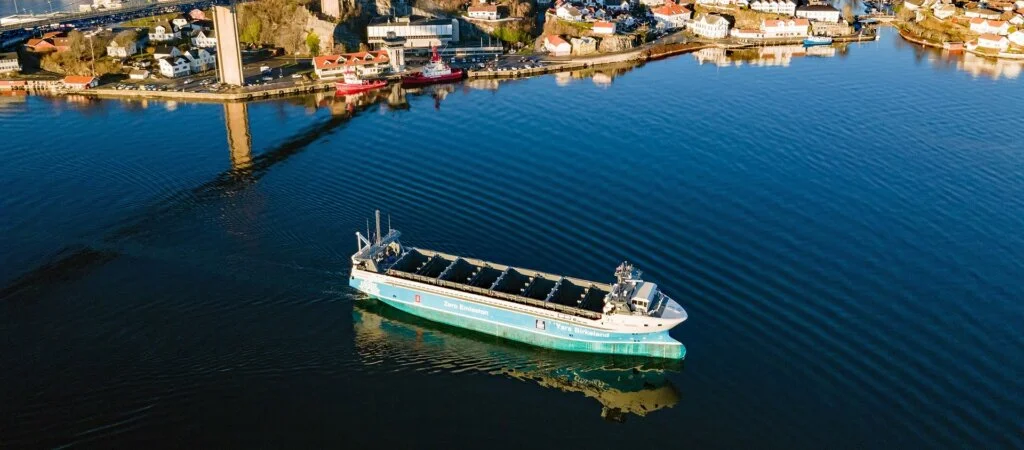
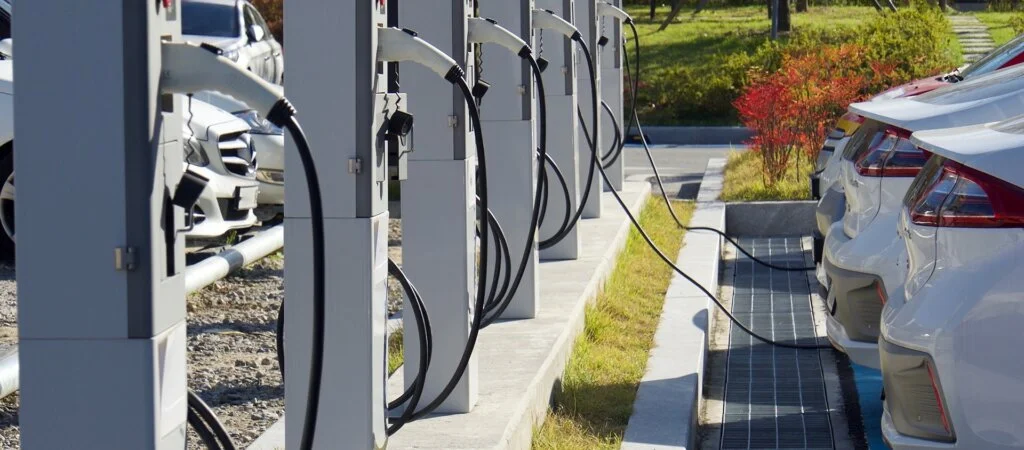

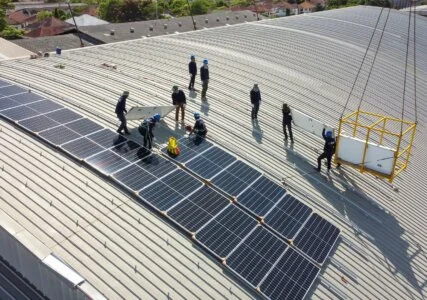

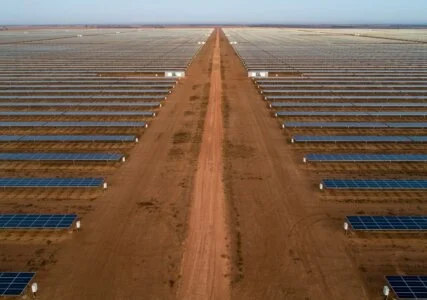
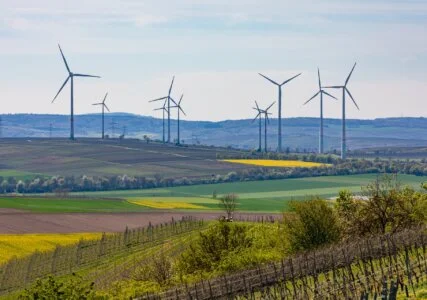
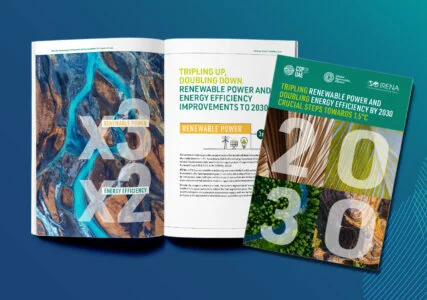
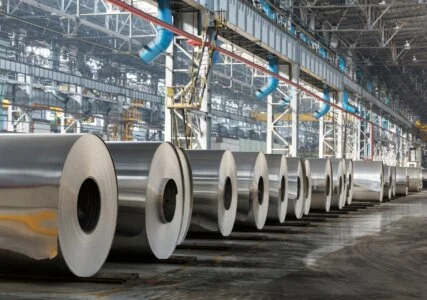
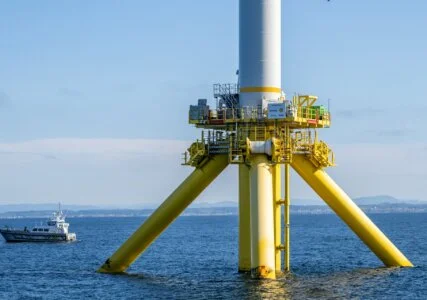
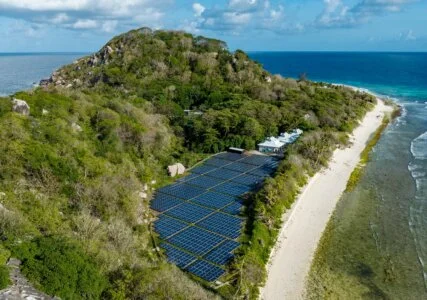
 Focus themes
Focus themes


